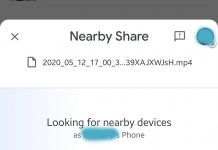As has been earlier promised and announced, on the 5th October 2021, Microsoft released its highly anticipated Windows 11, a new operating system that replaces and overhauls the entire user interface (UI) of Windows 10 that was released in 2015.
The system has been under the testing program, Dev and Beta channels until it was officially made public. The Company (Microsoft) released a test build 22000.194 for the Dev Channel on the 16th September 2021. On the 24th September, the same build was made available for the Beta and the Release preview channels, with speculation running that that same build would be the one that Microsoft would officially release to the public since it was almost a perfect version after it had gone through several revisions. This was the same build that has been released in the official channels.
In order to access the new operating system, users of compatible devices will have to “Check for updates” under the Settings, “Windows Update” of their devices to be able to download the new operating system. The first devices to receive the software will be the new qualifying devices that will be or are being sold by partners to Windows like HP or Dell among other companies, with Microsoft also dropping its own line in the Surface laptops and tablets.
For a device to be compatible, it must meet the following requirements which include among others 1 gigahertz (GHz) x64 bit processor, 4 GB ram, 64 GB ROM storage, UEFI, Secure Boot capable, a Trusted Platform Module (TPM) version 2.0, a graphics card that is compatible with DirectX 12 or later with a WDDM 2.0 driver, High Definition capable display with at least 720p, an internet connection and a Microsoft account.
Even as the software has officially launched, not all qualifying devices on the market will receive the upgrade right away as the roll out will be phased starting the 5th October 2021 until the next year.









